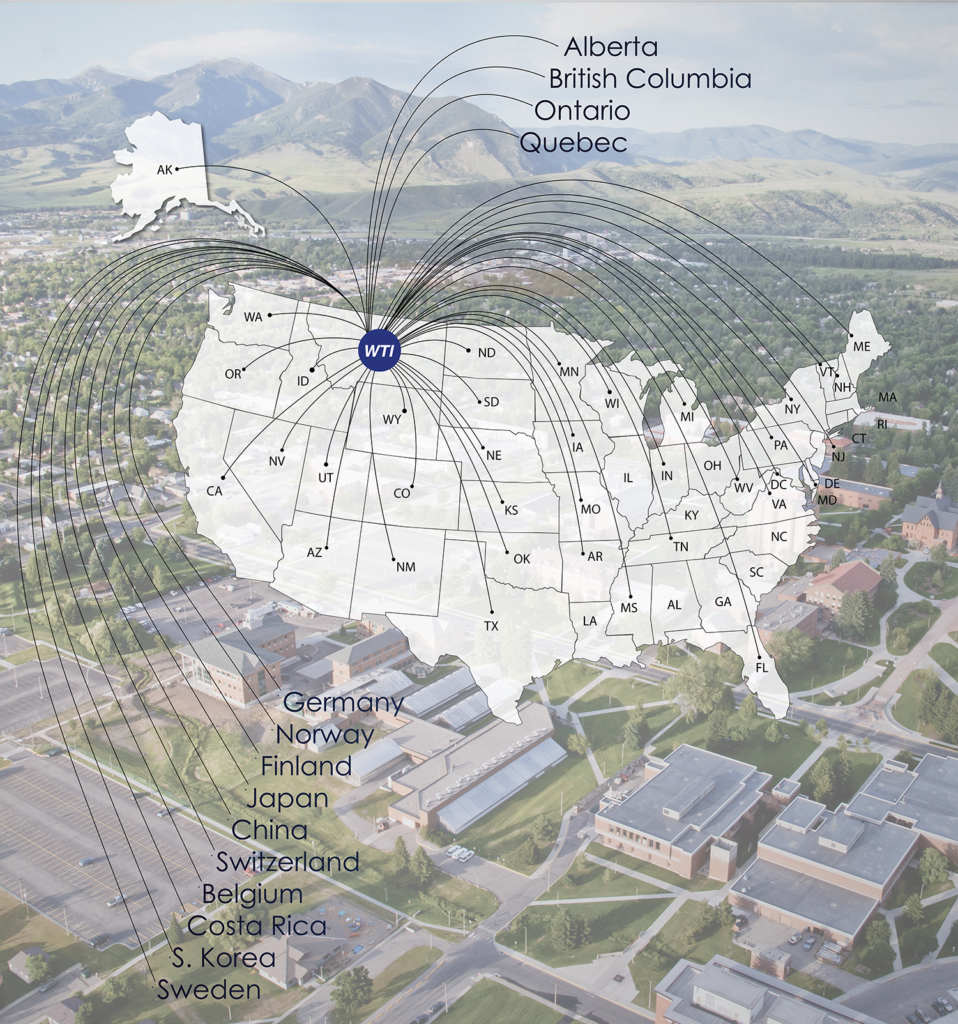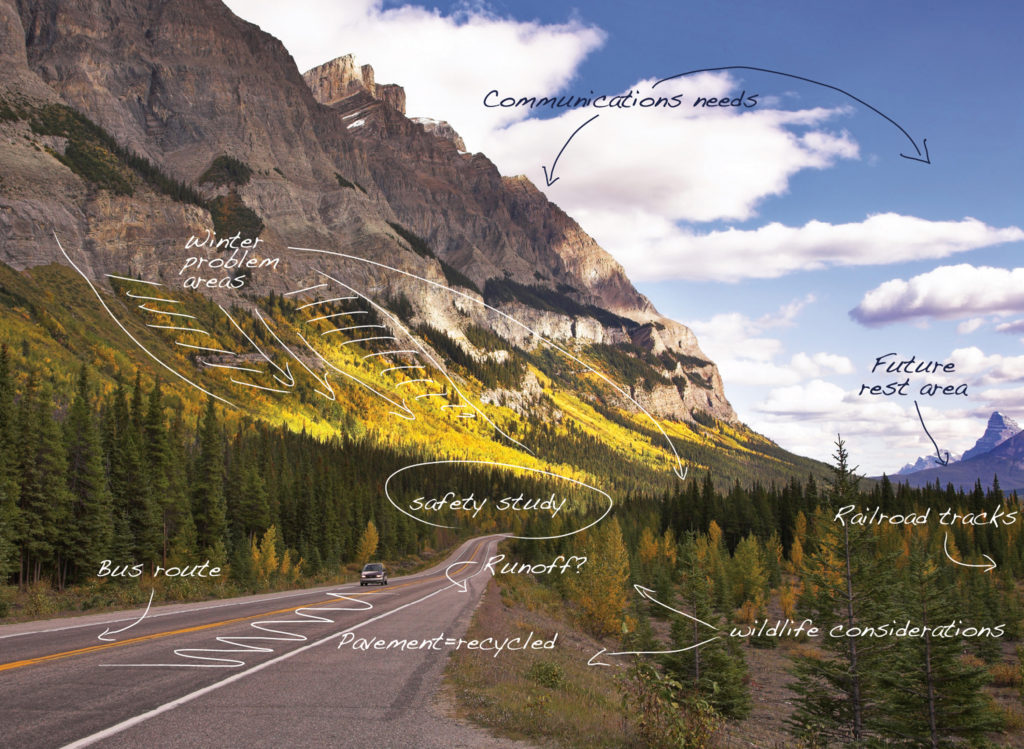Welcome to the Western Transportation Institute
Designated by the U.S. Department of Transportation’s Research and Innovative Technology Administration as one of the top 10 National University Transportation Centers, we fulfill our charge of advancing the field of rural transportation and developing the next generation of professionals by conducting cutting-edge, multidisciplinary research and outreach. As stewards and champions of rural America, we have a strong interest in research and projects related to sustainability, such as using recycled materials for roadways, providing rural public transportation options and cost effective solutions wildlife vehicle collision reduction.
We draw from our research groups to create solutions that work for our clients, sponsors and rural transportation research partners. While WTI focuses on rural issues, our program areas recognize and address concerns within the urban environment. Whatever the objective, we bring innovation and expertise to each WTI transportation research project.
WTI is a research department at Montana State University where we partner with faculty, other universities, transportation agencies and private sector partners.

The Montana and California Departments of Transportation founded WTI in 1994 in cooperation with MSU. Since then we have conducted research in almost every state and multiple countries around the world. The organization was designated as a UTC in 1998 and had its recognition renewed in 2005.
We live and work in rural communities and we understand the critical roles rural transportation plays in the lives of people, in the environment and in the economy.
Message From The Director
Welcome to the Western Transportation Institute!
We’re glad you’re here to find out more about what we do, and more importantly, what we can do working together.
At WTI, we believe that Rural Matters, and for the last thirty years we’ve worked hard to show that “rural” covers a lot of ground – both literally and figuratively.
Improving transportation to and through areas is not as simple as widening a road or adding a warning sign. We take a holistic approach to addressing challenges, so that the solutions are comprehensive, site-specific, and most importantly, effective. Then we carry out the work using teams of nationally and internationally-recognized experts on topics such as:
- Safety – both engineering and the human behavior side
- Road Ecology and Environmental Sustainability
- Infrastructure, Operations and Maintenance
- Public transportation and multi-modal networks
- Advanced Technologies and integrated systems
We are based in the beautiful Rocky Mountains and conducted much of our pioneering research here in the West. But nearly every state in the U.S. has large expanses of rural regions and hundreds to thousands of miles of rural roads, and our work supports USDOT priorities to enhance safety and mobility in rural as well as urban areas. We have helped state, regional, and local transportation agencies in more than 40 states, including places like California and New York, and we’re still growing. In fact many of our newest projects are being conducted internationally – through our partnerships with more than 20 countries, we bring our innovations to them, and they share theirs with us.
If you have a transportation challenge that we might be able to address or an idea for a research collaboration, please pick up the phone and call me. It’s an exciting time in transportation innovation, so let’s get moving!
What Is Rural Transportation? Why Rural Matters.
“Rural” means different things to different people. To someone who lives in a big city, any town of 50,000 people or less would seem rural. But to someone who lives on a remote farm or in a very small town, a city of 50,000 might be a major destination for shopping, recreation or medical care.*
At WTI we have studied rural transportation issues for more than 15 years. In that time we have come to understand “rural” as a context within which to understand the common characteristics and challenges met by travelers moving within and through rural areas:
- Long distance travel between towns and majority of trips over 15 miles in length
- High percentage (80%) of travelers drive for recreational reasons or trip purpose
- Two-lane highways where mobility can be easily disrupted by an accident or a slow-moving vehicle and where there are very few alternate routes
- Animal –vehicle collisions are common and costly
- Challenging driving conditions due to severe weather, steep mountain grades, narrow bridges, sharp curves, or wildlife near the roadway
- A large percentage of vehicles are tractor-trailers
- Gaps in wireless communication coverage
By understanding the nature of rural travel, WTI can develop integrated solutions that tackle fundamental issues and critical needs.
Rural Matters
Why do these issues matter? If you think that traveling on rural roads only affects a small number of Americans, think again. Our nation’s transportation network is an integrated system with each segment, rural and urban, necessary to the whole, and accompanied with its own issues and needs.
According to the Federal Highway Administration:
- Rural America makes up more than 80% of the nation’s land
- There are more than 3 million miles of rural roads and they carry 40% of all vehicle miles traveled.
- 90% of rural roads are one or two-lane
- The fatality rate on rural roads is more than twice that of urban areas
- Truck traffic on major trade corridors has increased by 80% in the last decade and is expected to increase 400% in the next decade
Most of us use rural roads at least some of the time, if not on a daily basis. It is in everyone’s best interest for our rural travel to be timely, efficient, and safe.
* For information about how the U.S. DOT defines “rural” for transportation purposes, go to: https://highways.dot.gov/safety/hsip/spm/urbanized-and-nonurbanized-safety-target-setting-final-report/30-geography
